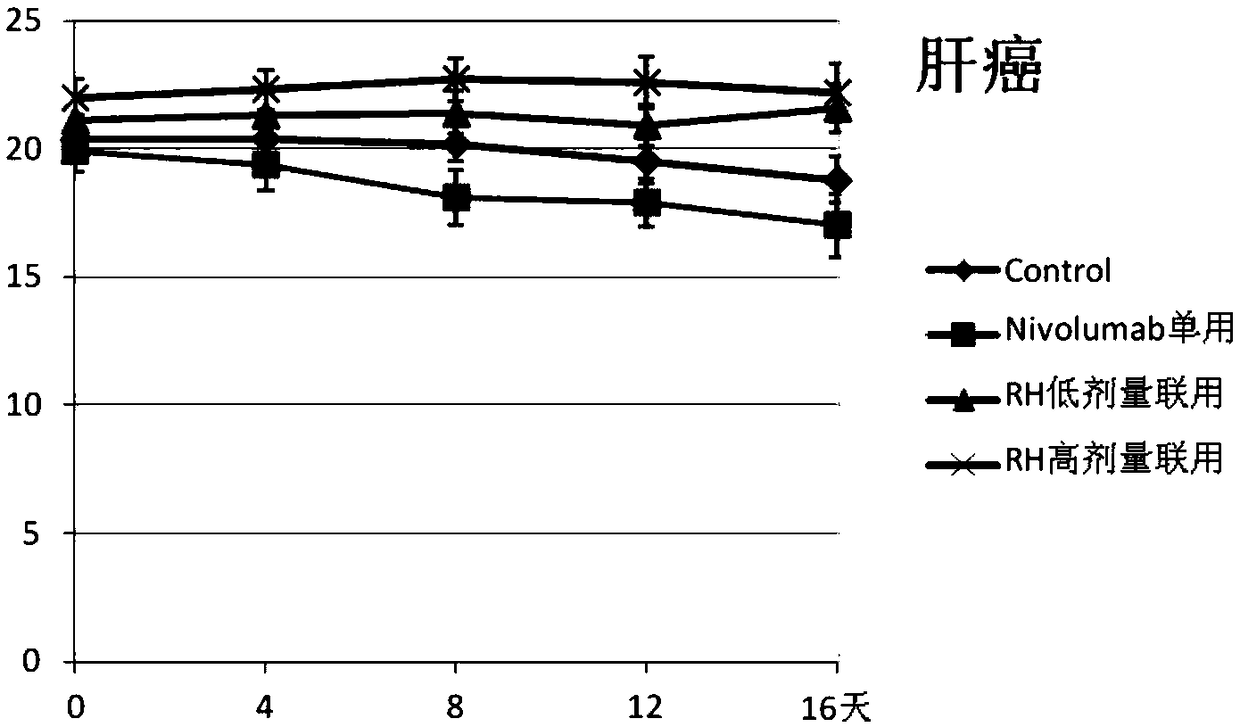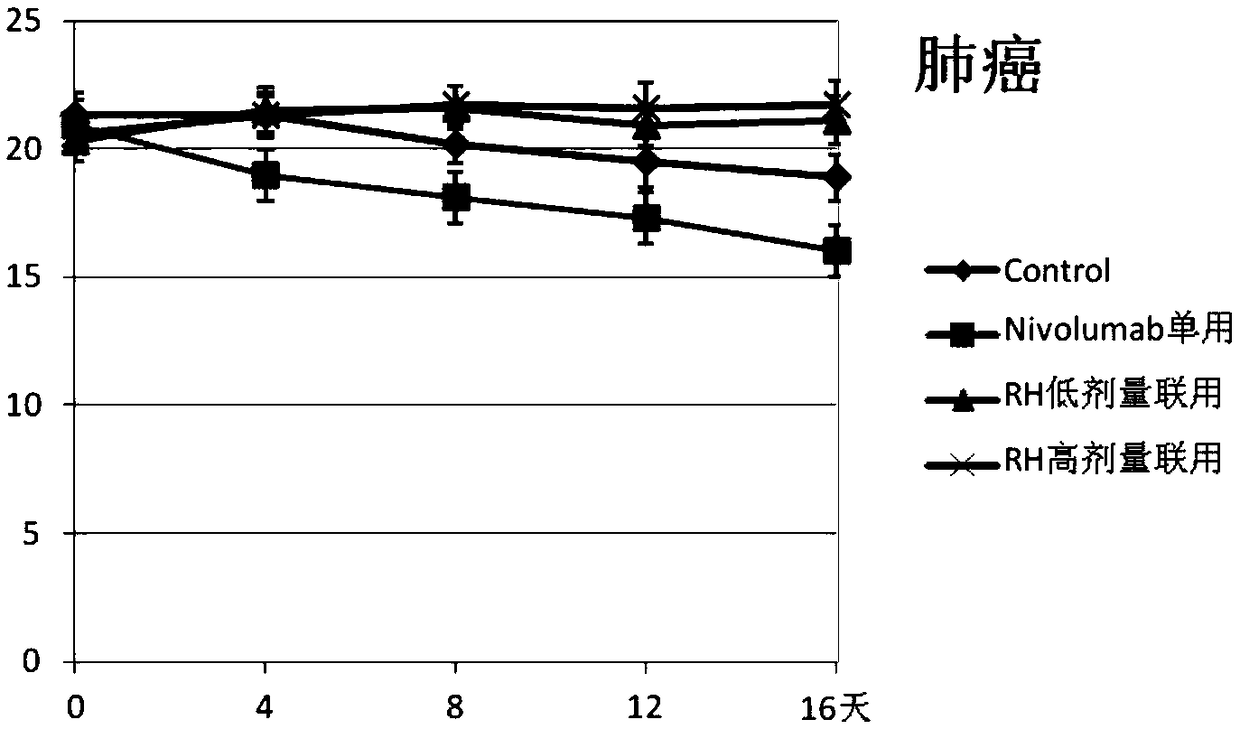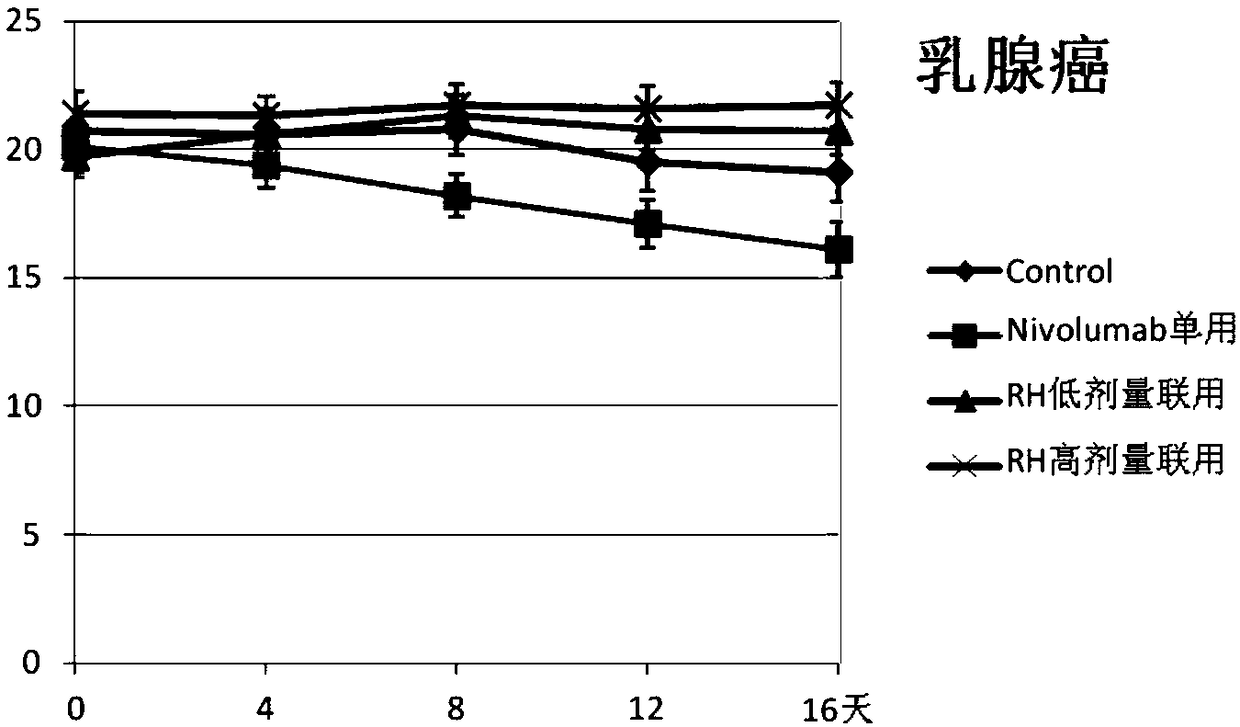Combined medicine containing berberine hydrochloride and PD1-antibody for preventing and/or treating tumor
A technology of berberine hydrochloride and PD-1, which is applied in the field of biomedicine to achieve the effects of improving sensitivity, maintaining stable body weight, and reducing side effects of treatment
- Summary
- Abstract
- Description
- Claims
- Application Information
AI Technical Summary
Problems solved by technology
Method used
Image
Examples
Embodiment 1
[0029] Embodiment 1, the preparation of berberine hydrochloride
[0030] Take 100 g of Coptis rhizome powder, extract twice with 900 ml of 50% ethanol under reflux, 1 hour each time, combine the two extracts, concentrate under reduced pressure until the extract is brownish-red syrupy. Add 1% acetic acid to the syrupy Coptis chinensis extract to dissolve it, suction filter it while it is hot, add concentrated hydrochloric acid dropwise to the filtrate to adjust the pH to 1.0, leave it to cool at room temperature, and yellow granular substances will precipitate out, filter it with suction, and use Wash twice with ice-cold water, once with acetone, and dry at 50°C to obtain crude berberine hydrochloride. The crude product was dissolved in water (70ml / 1g crude product) and heated, and concentrated hydrochloric acid was added dropwise to adjust the pH value to 2-3, then filtered while it was hot, and allowed to cool slowly at room temperature. After precipitation of crystals, suct...
Embodiment 2
[0031] Embodiment 2, preparation of mouse Nivolumab antibody for test
[0032] The variable region of the expression PD-1 antibody 5C4 gene was fused with the constant region of the mouse IgG2B gene to form a hybrid antibody. The gene was synthesized and cloned into pEGFP-C1 plasmid, and PD-1 was expressed by transient transfection in 293F cells. After being purified by Protein A column, molecular sieve and endotoxin removal column, the purity reaches 98%, and the endotoxin is lower than 1 EU / ml, dissolved in phosphate buffer, freeze-dried and stored.
experiment example 1
[0033] Experimental Example 1: Inhibitory effect of berberine hydrochloride combined with Nivolumab on the growth of subcutaneous transplanted tumors in animals and its toxic effect on animals.
[0034] 1.1 Test drugs: berberine hydrochloride prepared in Example 1 and Nivolumab prepared in Example 2.
[0035] 1.2 Experimental animals: 32 C57BL / 6 mice, female, weighing about 20 g, 6 weeks old, SPF grade, all mice had free access to food and water, and were raised at room temperature (25±2)°C. Feed and water are all autoclaved, and the entire feeding process is SPF grade.
[0036] 1.3 Experimental method:
[0037] 1.3.1 Establishment and intervention of tumor-bearing mouse model
[0038]Four subcutaneous xenograft tumor models were prepared respectively: liver cancer cell line Huh7, lung cancer cell line A549, breast cancer cell line MCF-7, and colon cancer cell line Lovo. 6 / ml of cell suspension, C57BL / 6 mice were injected with 200ul of cell suspension under the armpit of t...
PUM
 Login to View More
Login to View More Abstract
Description
Claims
Application Information
 Login to View More
Login to View More - R&D
- Intellectual Property
- Life Sciences
- Materials
- Tech Scout
- Unparalleled Data Quality
- Higher Quality Content
- 60% Fewer Hallucinations
Browse by: Latest US Patents, China's latest patents, Technical Efficacy Thesaurus, Application Domain, Technology Topic, Popular Technical Reports.
© 2025 PatSnap. All rights reserved.Legal|Privacy policy|Modern Slavery Act Transparency Statement|Sitemap|About US| Contact US: help@patsnap.com



